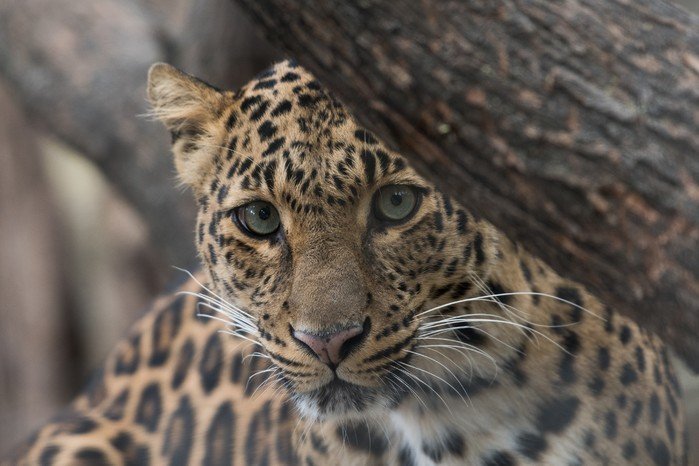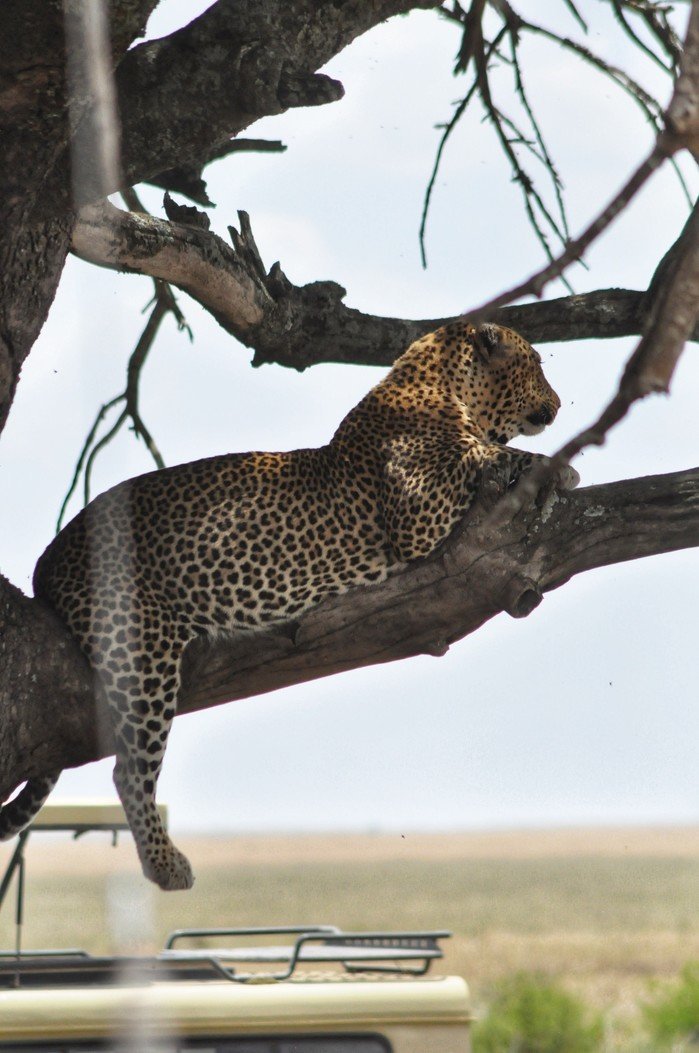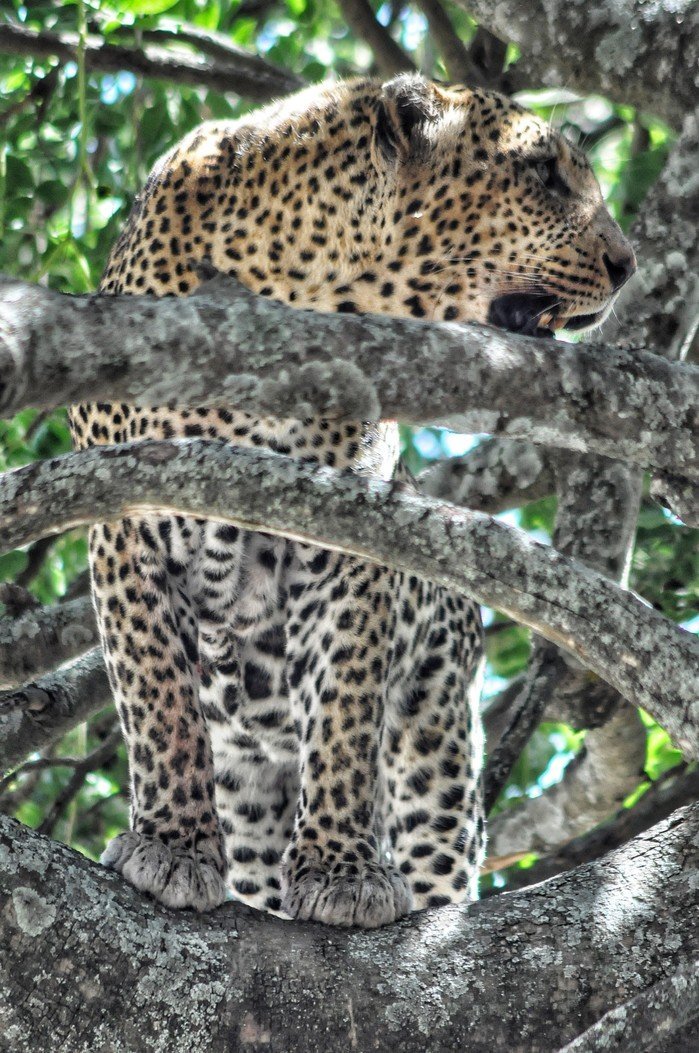THE LEOPARD
Ghost of the wild
Saturday, 31.Dec 2022
Tanzania is one of the best places in the world to see Leopards in their natural habitas. Leopards are very rare animals to sight but when it comes to Tanzania you have high chances of seeing leopards on your safari game drive if you choose to visit these best national parks you will get a chance to see them.
Leopards are among the big cat family animals in Tanzania, with other cats including lions, and cheetahs. More often leopards are mistaken for jaguars. Leopards however have long bodies with short legs and large skull. Leopards also have a great physique, well camouflaged fur, great strength and opportunistic behavior, have abroad diet and a great ability to various inhabitants, no wonder they are found almost in all habitants in Africa. While you can easily find leopards in savannah plains, you can as well find them in jungles, like rain forest.
Leopards have a broader geographic range than all the other big cats and are highly adaptive to different environments because of their elusive and widespread distribution, the exact number of leopards remaining in the wild is unknown. Leopards have experienced steep population declines worldwide and are believed to now occupy just 25 to 35% of their historical range.
It is possible that more than 1,000 leopards survive across northern Tanzania, through no population estimates exist. The Northern Tanzania big cats conservation initiative protects leopards by working to maintain habitat connectivity, conserving the leopard’s wild prey, reducing leopard attacks on livestock with living walls – hence avoiding the need for retaliatory leopard killings and by improving our understanding of the presence and abundance of these great cats across the landscapes where we work.
Pound for pound, the leopard is the strongest climber of all the big cats, their shoulder blades even have special attachment sites for stronger climber muscles. They spend much of their time in trees even when stalking prey and eating. Both lions and hyenas will take away a leopard food if they can. To prevent this, they will often store their kill high up in tree branches where it can feed relative safety. They are predominantly nocturnal, solitary animals but each individual has a home range that overlaps with its neighbors, males have a large range and a single male’s range will often overlap with the range of several females, range are marked with urine and claw maeks.
Female leopards set down root when cubs are born
A female typically gives birth to a litter of two or three cubs. She abandons her nomadic lifestyle until the cubs are large enough to accompany her, she keeps them hidden for the fist eight weeks and moves the from one location to the next until they are old enough to start learning to hunt. They get their first taste of meat in six or seven weeks and stop suckling after about three months, the cubs continue to live with their mother for about two years.
Leopards are powerful carnivores built with long bodies, relatively short legs and a broad head. There are nine subspecies and are distinguished by the unique characteristics of their coat, which range from tawny or light yellow in warm, dry habitats to reddish-orange in dense forests. Their coat is covered in dark, irregular sports called rosettes. These spots are circular in east African leopards, but square in southern African leopards.
The primary threat to leopards is human activity
The main threat facing leopards are habitat loss and fragmentation, prey species loss, human-wildlife conflict, poaching for their fur and body parts, and unregulated trophy hunting. Given their adaptable nature, opportunistic feeding behaviour, and ability to persist undetected by humans, leopards are considered more resilient to many of these threats and have received relatively less conservation concern. However, recent studies demonstrating the significant range reduction of leopards throughout Africa, calling their conservation status and needs into question. A preference for medium-sized prey, which are in decline in many parts of their range, may further threaten this stunning wild cat.
Habitat fragmentation, reduced prey base, and human-wildlife conflict greatly reduced this species’ population throughout most of their range. Although they are widely distributed across Africa and Asia, due to habitat fragmentation and loss, their range has reduced by 31 percent worldwide in the past three generations (about 22 years). The commercializes bushmeat trade has caused a collapse of prey populations across large parts of savannah Africa – estimated an average of 59 percent in prey population across 78 protected areas.
Leopards hunt at night, usually on the ground or in trees. They are generally asocial animals, living solitarily and avoiding other leopards. Moreover, when leopards accidently encounter each-other they can engage in a fight, usually, the animal emits a rasping or sawing cough in order to inform other leopards of its presence. Home ranges of leopards usually overlap with each other. Thus, the home range of a male leopard can often overlap with the territories of multiple. Female. Females live with their cubs in home range that overlap extensively and continue to interact with their offspring even after wearing; females may even share kills with their offspring when they can not obtain any prey. Leopard are active mainly from dusk till dawn and rest for most of the day and some hours at night in thickets, among rock or over trees branches. In some regions, they are nocturnal. Leopards usually hunt on the ground and depend mainly on their acute senses of hearing and vision for hunting. They stalk their prey and try to approach it as closely as possible, typically within 5 m (16 ft) of the target, and finally, pounce on it and kill it by suffocation. Leopards produce a number of vocalizations, including growls, snarls, meows, and purrs. Cubs call their mother with an ‘urr-urr’ sound, in order to warn intruders, leopards usually scratch trees, leaving claw marks. In addition, due to having a highly developed sense of smell, they often use scent marks.





